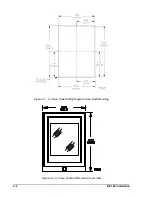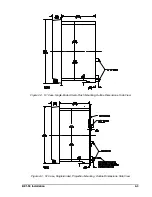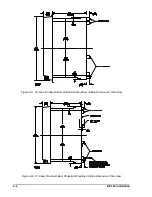
BE1-50 Introduction
iii
CONTENTS
SECTION 1 GENERAL INFORMATION . . . . . . . . . . . . . . . . . . . . . . . . . . . . . . . . . 1-1
SECTION 2 HUMAN-MACHINE INTERFACE . . . . . . . . . . . . . . . . . . . . . . . . . . . . . 2-1
SECTION 3 FUNCTIONAL DESCRIPTION . . . . . . . . . . . . . . . . . . . . . . . . . . . . . . . 3-1
Summary of Contents for BE1-50
Page 1: ... 05647 6 10 07 14 056 06 0 175 18 4 744 06 4 Publication 9 1710 00 990 Revision C 11 98 ...
Page 5: ...iv BE1 50 Introduction CONTENTS Continued SECTION 7 MANUAL CHANGE INFORMATION 7 1 Changes 7 1 ...
Page 12: ...2 2 BE1 50 Human Machine Interface Figure 2 1 Location of Controls and Indicators ...
Page 20: ...BE1 50 Installation 4 5 Figure 4 7 S1 Case Single Ended Panel Drilling Diagram Rear View ...
Page 21: ...4 6 BE1 50 Installation Figure 4 8 S1 Case Double Ended Panel Drilling Diagram Rear View ...
Page 22: ...BE1 50 Installation 4 7 Figure 4 9 Outline Dimensions Rear View ...





































